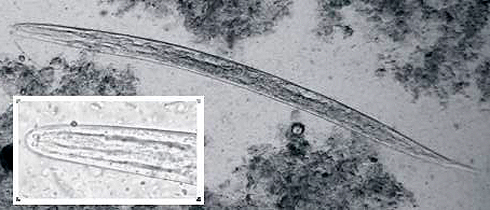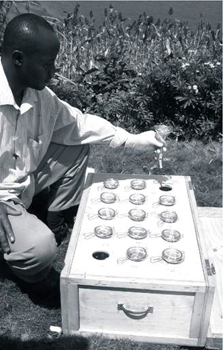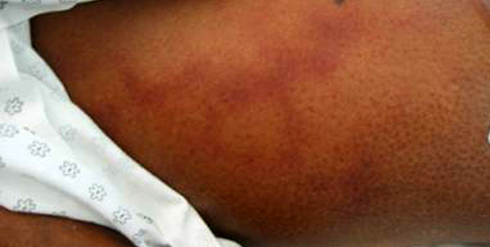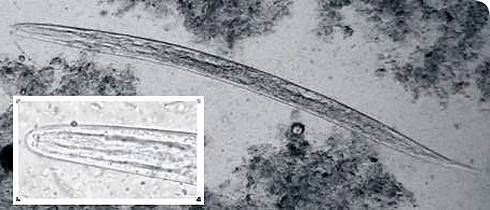Strongyloides stercoralis
Strongyloides stercoralis is a minute nematode worm, pin worm, that causes strongyloidiasis, a neglected tropical disease that affects humans.
Severe strongyloidiasis is potentially fatal symptoms of include
- Insidious and occasionally abrupt onset
- Nausea, vomiting, and severe abdominal pain
- Diarrhea, occasionally bloody
- Cough, hemoptysis, dyspnea, and wheezing
- Stiff neck, headache, and confusion (if CNS involvement)
- Rash
- Fever, chills
Severe strongyloidiasis can occur many decades after the initial infection occurs when patients become immunosuppressed as a result of other factors such as
- HIV
- lepromatous leprosy
- aplastic anemia
- malnutrition
- tuberculosis
Species detail
Whilst worms are very small, infected people can have several thousands inside their intestine, and unlucky individuals can have even more widely dispersed throughout major organs of the body.
-

Distribution
Discover the extent to which strongyloidiasis is spread throughout the world and why better methods for diagnosing the disease are needed.
-

Biology
Learn about the remarkable lifecycle of Strongyloides which can result in female worms developing into male worms.
-

Disease
Find out how Strongyloides stercoralis infects and affects humans.
Global distribution

A map showing the worldwide distribution of human strongyloidiasis. © www.praxis-heinke.de/
Images

The rhabditiform larvae form of the Strongyloides stercoralisthis parasite. This is the form of the parasite seen in the stools of infected patients. © R Stothard

Strongyloidiasis diagnostic lab. © R Stothard

The lifecycle of Strongyloides stercoralis © CDC

Strongyloides stercoralis © R Stothard
Author
Dr Russel Stothard
Toolbox
Museum research
Museum scientists are running projects in Uganda and Zanzibar
- to better map the distribution of the disease
- to promote control programmes
The control programmes administer the de-worming drug ivermectin proven to be very effective against strongyloidiasis.
